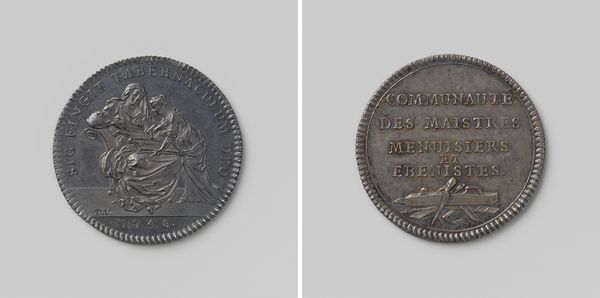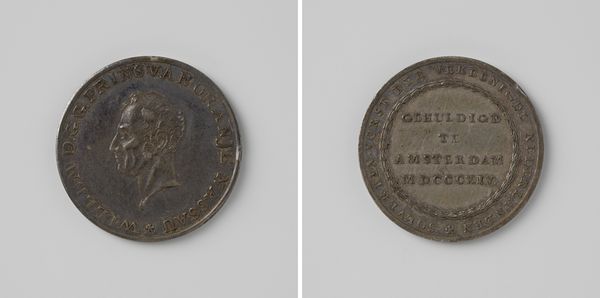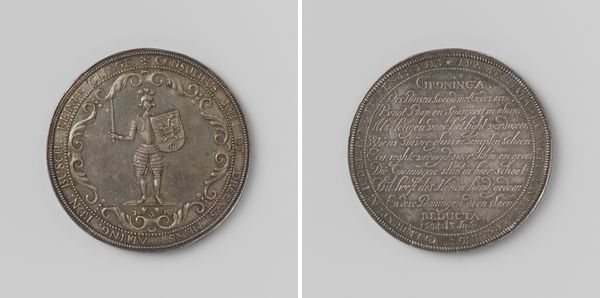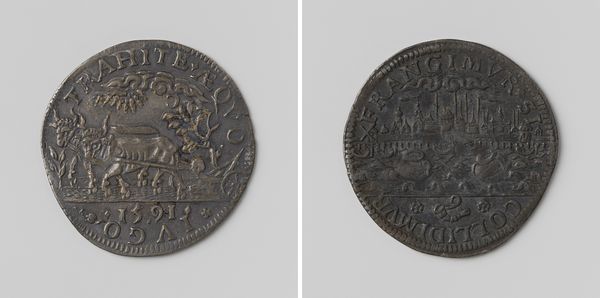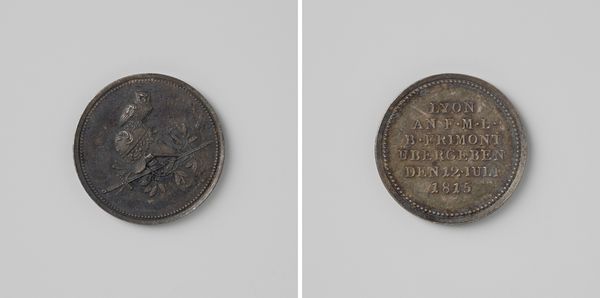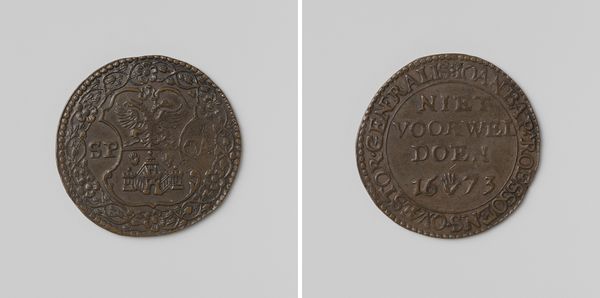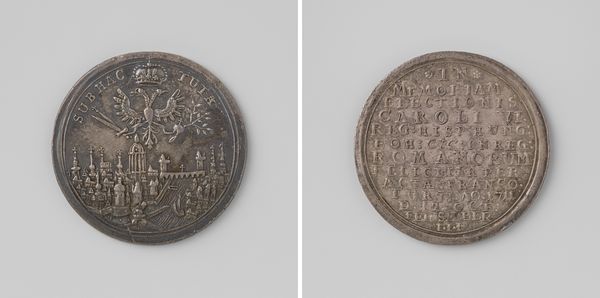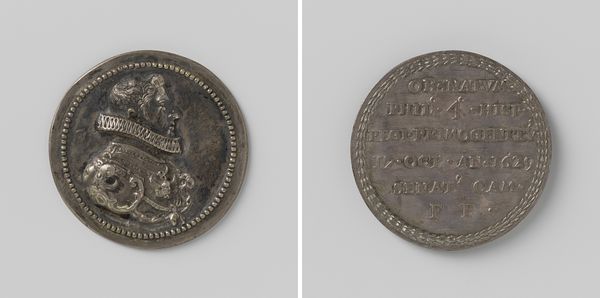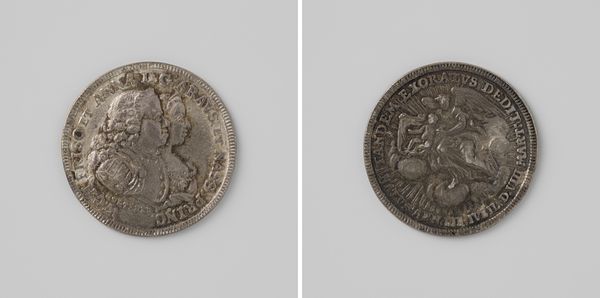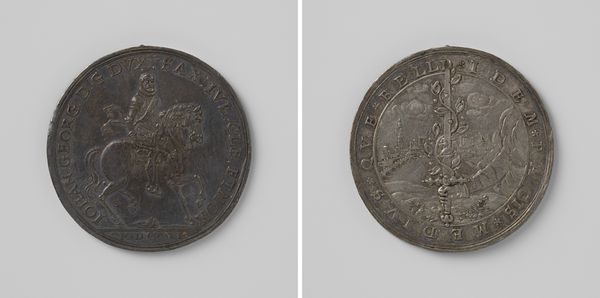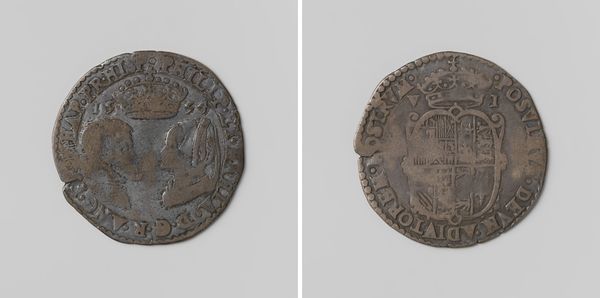
Geboorte van Karel, erfprins van Engeland, Schotland, Ierland en Frankrijk 1630
0:00
0:00
print, metal, engraving
#
portrait
#
baroque
# print
#
metal
#
engraving
Dimensions: diameter 2.4 cm, weight 1.79 gr
Copyright: Rijks Museum: Open Domain
Editor: Here we have an engraving titled "Geboorte van Karel, erfprins van Engeland, Schotland, Ierland en Frankrijk," dating back to 1630. It's Baroque, made of metal, currently residing at the Rijksmuseum. What's striking is its stark utilitarian quality, almost mass-produced despite its ostensible commemoration of a royal birth. How do you see the function of such a piece? Curator: It's crucial to consider the context: metal engraving, in the 17th century, represents a specific mode of production and consumption. Rather than appreciating it simply for its artistic merit, think about the economic and social dynamics involved in its creation and distribution. Who was producing these engravings, and what purpose did this object really serve? Editor: So, less about celebrating Charles's birth, more about... circulating power? Curator: Precisely. Think about the labor invested in the metal work and engraving itself – what were the working conditions like for those crafting these objects? How would such an item be dispersed in a period lacking mass-media technologies as we know them? These factors speak to the intended function and demonstrate a network connecting artisans and consumers alike. It transcends the intention, it’s an early mechanism for shaping popular opinion through material means. Editor: That’s a compelling perspective; it highlights the societal undercurrents represented by even small commemorative objects such as these. Curator: The beauty of looking at art this way is we move past what we are told an object is ‘for’ and dig into what it really means and does in society. Editor: I see. Thanks, that gave me a lot to consider about artistic purpose and labor in the era!
Comments
No comments
Be the first to comment and join the conversation on the ultimate creative platform.
